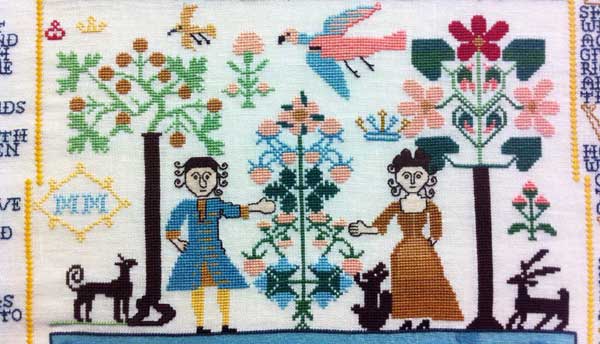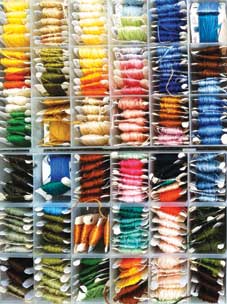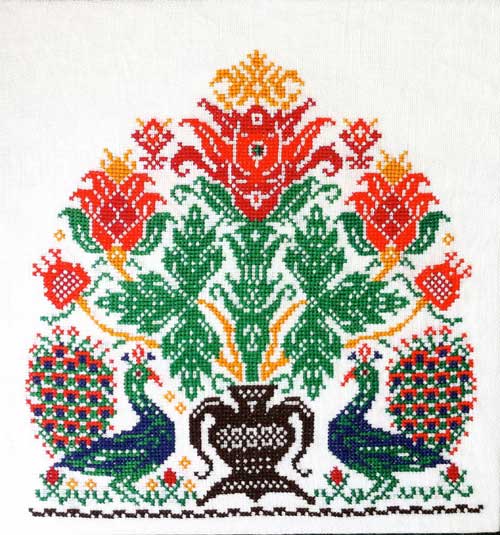Margaret Milne says she’s tempted to call her forthcoming exhibition at Aratoi ‘Four hundred shades of DMC’ – DMC being the brand of embroidery thread she has become well acquainted with over many decades of needlecraft.
Now contending with a serious illness, her energy levels may be diminished but her sense of humour is not.
“There are 453 colours in the DMC range and I think I must have most of them,” she says.
Handwork has been a constant in Margaret’s life ever since she was introduced to it by a cousin’s grandmother, aged about six. Around this time she also learnt to use a treadle Singer sewing machine. She was born in North Carolina, the daughter of an American GI and a Wairarapa girl. She came to New Zealand with her family when she was a toddler and later attended St Matthews as a boarder. Since then, she has always had a base in Wairarapa and always regarded the region as home, despite living in Wellington and overseas with husband Derek and five children at different periods.
According to a school friend Liz Waddington (nee Cowie), Margaret was an independent spirit from early on: “She got ragged for doing sewing and stitching, because it was different from the sort of ‘jolly hockey sticks’ sports everyone else was doing then,” says Liz.
Margaret did her teachers training in Wellington and during that time learnt about Polish needlework traditions from a friend’s mother. She found the bold colours and images of birds and animals exciting. She taught at primary school level and continued with her handwork, working in almost every imaginable type of stitch from tatting and lacework to knitting and quilting, and also sewing and dressmaking for her children.
She reconnected with her American heritage in the 1960s, visiting her grandmother in North Carolina, which is known as ‘the cradle of quilt-making’. “My grandmother told me she had two things to teach me: how to kill and dress a chicken, and how to make a quilt,” she says.
Quilting has since become a widespread and popular hobby but its roots go back to pioneering days in this region: “They never stopped quilting in North Carolina,” says Margaret.
Derek’s work as a scientist took the couple to Botswana in the early 2000s and there Margaret experienced the wealth of African crafts, including beading and Afrikaner embroidery. While in Africa, she did christening gowns and decoupage, some of which is on display in the exhibition.
Margaret says she’s always had to have “something on the go,” and the exhibition showcases her wide variety of work and the high level of artistry she has achieved. But she insists that there’s nothing difficult about embroidery: “All you have to have is stamina,” she says.
Visitors to the exhibition can make up their own minds on this point.


